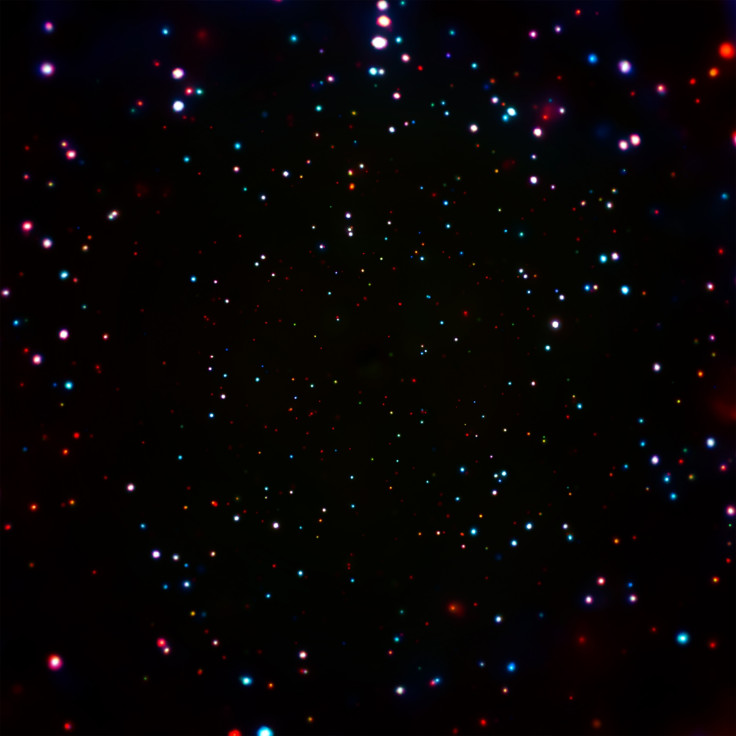Nasa reveals deep-space 'treasure trove' of supermassive black holes
X-rays and data from the Hubble Telescope show the densest cluster of black holes ever observed.
The deepest X-ray image of space ever taken has unearthed more than 5,000 black holes clustered in an area that, when viewed from Earth, takes up no more space than the size of a full moon.
The picture shows a region of space between nine and 11 billion light years away that is stuffed with black holes – and around 70% of the objects detected in the image are supermassive black holes. These each have a mass of between 100,000 and several billions of times that of the Sun.
"It can be very difficult to detect black holes in the early universe because they are so far away, and they only produce radiation if they're actively pulling in matter," said Bin Luo of Nanjing University in China, an author of a study published on the preprint server arXiv. Black holes are so dense and massive that their gravitational field does not allow even light to escape.
Scientists used NASA's Chandra X-ray Observatory to view the same patch of space continuously for 81 days.

"By staring long enough with Chandra, we can find and study large numbers of growing black holes, some of which appear not long after the Big Bang."
The team discovered that these young black holes underwent growth spurts, rather than gaining mass steadily through time. The 'seeds' that lead to the growth of supermassive black holes also seem to be heavy, with masses of between 10,000 to 100,000 times that of the Sun.
"By detecting X-rays from such distant galaxies, we're learning more about the formation and evolution of stellar-mass and supermassive black holes in the early universe," said lead author of another study published on arXiv on the image, Fabio Vito, of Pennsylvania State University. "We're looking back to times when black holes were in crucial phases of growth, similar to hungry infants and adolescents."
As well as the Chandra images, the researchers looked at the same patch of space using the Hubble Telescope, to look even further back in time, at galaxies emitting X-rays around 12.9 billion light years away. "With this one amazing picture, we can explore the earliest days of black holes in the Universe and see how they change over billions of years," said Niel Brandt, an astrophysicist at Penn State, Pennsylvania, who was a co-author of both studies.
© Copyright IBTimes 2024. All rights reserved.






